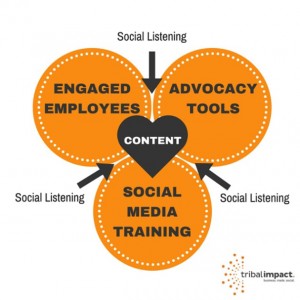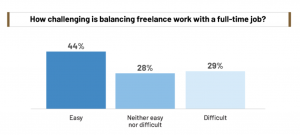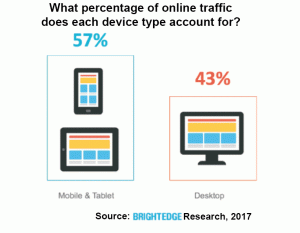New small business owners may find themselves so consumed by the day-to-day operations and the efforts required in leading such an endeavor that taking time for future planning may seem next to impossible. But it’s worth paying attention to business trends: what’s new, what’s happening and what’s on the horizon. Here’s a look at some trends that could make an impact in 2018.
Live streaming
The first time we saw an alert that a friend, business or celebrity was “live” on Facebook, it may have been a head-scratching moment. But the instant video capability — and the equivalent video features of other platforms — has become another opportunity for small businesses to reach their audience. Here’s how Facebook CEO Mark Zuckerberg put it in his 2016 announcement of Facebook Live: “Live is like having a TV camera in your pocket. Anyone with a phone now has the power to broadcast to anyone in the world. When you interact live, you feel connected in a more personal way. This is a big shift in how we communicate, and it’s going to create new opportunities for people to come together.”
Michael Guta explores this in a story for smallbiztrends.com. He features Tom Hopkins, managing director of One Productions, who created an infographic about live video. Among the successful efforts mentioned in it are a “Tiny Kitchen” live video by Tastemade, a rescue dog campaign by the ASPCA and “ask me anything” sessions by Sephora.
Look ahead to Generation Z
There is no shortage of analysis about millennials and how their buying habits can have an impact on businesses and even entire industries. What matters to them? How can we effectively reach out to them as customers? And Generation Z, regarded as people born in 1995 and later, is coming up fast. Melissa Thompson writes in a story for Inc.com that Generation Z “is growing quickly in influence and power.”
“It is critical for businesses of all sizes to recognize the importance of this consumer segment shift,” Thompson writes. “Members of Gen Z, on average, carry an entirely unique customer persona that is foreign to traditional marketers. For instance, compared to Millennials, Gen Z is far more entrepreneurial (72 percent want to start a business), digitally prepared (15.4 hours a week on their smartphones) and experience focused (60 percent prefer cool product over cool experience).”
Artificial intelligence
Those two words may still inspire science-fiction visions for some. But anyone who has asked a “virtual assistant” for information through a device has at least dabbled in the concept of artificial intelligence. The rise of AI is a top tech trend for small businesses in this story by the National Federation of Independent Businesses, written by Alexa Mencia:
“With AI growing in popularity through services like Amazon’s Alexa and Apple’s Siri, many predict it will become more mainstream. AI technologies learn, understand, express, foresee, develop and function autonomously. AI can improve your business model, relationship with customers, analytics, and marketing.”
The NFIB infographic states that “59 percent of organizations are collecting information to build an AI strategy. … What can you do now? Invest in data collection, integration, and training for AI strategy.”
Location in marketing
The GPS capabilities in smartphones can open more doors in business marketing. The ability to reach customers in a certain geographic range is a trend worth watching, according to a Young Entrepreneur Council story for Forbes. Location-based marketing, Kalin Kassabov writes, is “the ability to target customers based on their current location using GPS tracking.”
“Customers, of course, must give their permission for this,” he says. “This allows you to send people extremely relevant messages when they’re close to your business or even that of a competitor. You might also alert people to a special sale or promotion when they’re in your store. As mobile technology gets ever more popular, location-based marketing will become increasingly powerful.”
Customer focus
Even as technology shifts the business landscape on an almost constant basis, a small business’ efforts should always put a heavy emphasis on customer service. In Kassabov’s piece for Forbes, he writes about ways to interact with customers, including engaging them on social media, incorporating “chatbots” to assist web visitors, and to actively seek feedback.
“Customer surveys, whether on your website or handed out in your store, are important for tracking satisfaction,” he writes. “Use these regularly and update them with new questions, such as how people feel about new products, features and policies.”
Enhanced experiences
When a business offers a unique experience, it can create a bond with customers that can keep them coming back. Jeffrey Hayzlett writes for Entrepreneur about the sophistication of modern consumers, and how they will research a business or product in advance of making a purchase. This creates the need for “personalization and creating interactive experiences,” he says. He uses The New York Times as an example, when the newspaper distributed Google cardboard headsets to subscribers in 2015 so that readers could view virtual reality content. Bass Pro Shops provide another interesting case, he says:
“Bass goes through great lengths to immerse customers in the life of an outdoorsman by taking them on an adventure while they browse the store. Fish tanks, taxidermied animals and campers are all on hand to create the illusion that the customer is actually outdoors. And that makes people browse longer. The result? More store traffic and more store time equals more sales. Today, Bass Pro stores attract more than 120 million visitors annually. Apparently, its message is resonating.”
Payment shifts
The ways people purchase everyday items has of course changed drastically over the years. Having cash on hand for these purposes is no longer a priority. While the variety of new and easy payment methods translate into benefits for the consumer, there are advantages for small businesses as well. Alex Chriss writes about “our transition to becoming a cashless society” in a story for Inc.com.
“Going cashless is great for small business,” he explains. “It streamlines bookkeeping, creates a safer business environment, and gives customers more payment options. It’s how customers want to pay. Fortunately, cashless payments are getting easier. From Apple Pay to Square to QuickBooks GoPayment, you now have a plethora of options if you want to explore digital transactions. And you should: Come 2018, more customers than ever will expect digital payment options from businesses of all sizes.”
Business & Finance Articles on Business 2 Community(89)
Report Post






